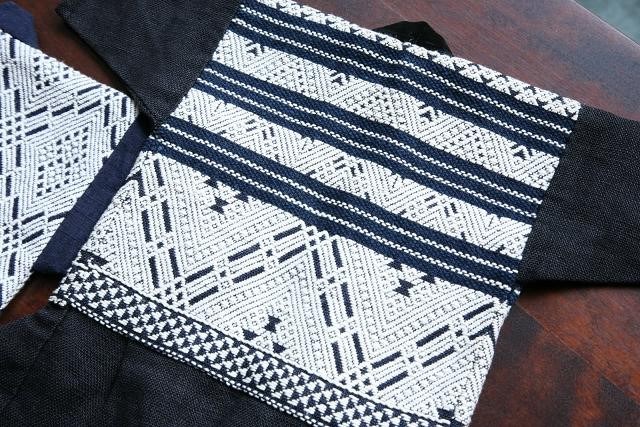SASHIKO EMBROIDERY
Aomori and Yamagata Prefectures (since nineteenth century)
Materials: Linen, cotton
Sashiko was originally made by women during the months of heavy snowfall to repair torn daily garments and work clothes. Cotton did not grow in the colder climates of the Tohoku district, and for a period commoners were prohibited from using this valuable material. Employing a special sashi technique, cotton was threaded into linen fabric to make them warmer. Embroidered patches were applied to reinforce work clothes, helping people survive the frigid winters. These functional items also expressed women’s love for their families. Many of the patches were made in the shape of flowers and animals, which evolved into highly decorative designs and sophisticated geometrical patterns.
刺し子
青森県、山形県 1800年代(江戸時代)~
素材:麻・綿
日常の衣類・労働着の修理や補強を目的とした実用的な「刺し」という技法で、雪深い北国で生きた女性たちから生まれた手仕事です。寒冷地の東北では木綿が育たず、庶民の木綿の着用が禁じられていた時代があり、木綿は大変貴重なものでした。女性たちは手織りした麻布にわずかな綿糸を刺すことで温くなった布を身につけ、冬の寒さをしのぎ、また家族の日常着を補強しました。刺し子は暮らしの知恵であり、家族への愛情でもありました。のちに農家の女性たちによって、身の回りの草花や動物をモチーフにした装飾性の高い模様が多く生み出され、その緻密さと幾何学的デザインの高度な技は目を見張るものがあります。



